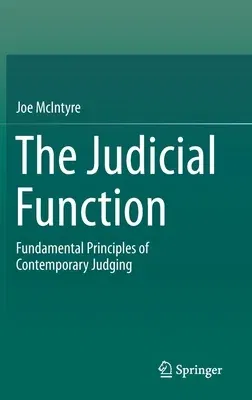Judicial systems are under increasing pressure: from rising litigation
costs and decreased accessibility, from escalating accountability and
performance evaluation expectations, from shifting burdens of case
management and alternative dispute resolution roles, and from emerging
technologies. For courts to survive and flourish in a rapidly changing
society, it is vital to have a clear understanding of their contemporary
role - and a willingness to defend it.
This book presents a clear vision of what it is that courts do, how they
do it, and how we can make sure that they perform that role well. It
argues that courts remain a critical, relevant and supremely
well-adjusted institution in the 21st century.
The approach of this book is to weave together a range of discourses on
surrounding judicial issues into a systemic and coherent whole. It
begins by articulating the dual roles at the core of the judicial
function: third-party merit-based dispute resolution and social
(normative) governance. By expanding upon these discrete yet
inter-related aspects, it develops a language and conceptual framework
to understand the judicial role more fully. The subsequent chapters
demonstrate the explanatory power of this function, examining the
judicial decision-making method, reframing principles of judicial
independence and impartiality, and re-conceiving systems of
accountability and responsibility. The book argues that this
function-driven conception provides a useful re-imagining of some
familiar issues as part of a coherent framework of foundational, yet
interwoven, principles. This approach not only adds clarity to the
analysis of those concepts and the concrete mechanisms by which they are
manifest, but helps make the case of why courts remain such vital social
institutions.
Ultimately, the book is an entreaty not to take courts for granted, nor
to readily abandon the benefits they bring to society. Instead, by
understanding the importance and legitimacy of the judicial role, and
its multifaceted social benefits, this books challenge us to refresh our
courts in a manner that best advances this underlying function.

